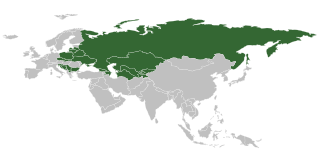
Epaulette is a type of ornamental shoulder piece or decoration used as insignia of rank by armed forces and other organizations. Flexible metal epaulettes are referred to as shoulder scales.
The chart below represents the current enlisted rank insignia of the United States Air Force.
The United States Air Force officer rank insignia in use today.
Officer Cadet is a rank held by military cadets during their training to become commissioned officers. In the United Kingdom, the rank is also used by members of University Royal Naval Units, University Officer Training Corps and University Air Squadron; however, these are not trainee officers with many not choosing a career in the armed forces.

Modern Russian military ranks trace their roots to the Table of Ranks established by Peter the Great. Most of the rank names were borrowed from existing German/Prussian, French, English, Dutch, and Polish ranks upon the formation of the Russian regular army in the late 17th century.

Polkovnik is a military rank used mostly in Slavic-speaking countries which corresponds to a colonel in English-speaking states, coronel in Spanish and Portuguese-speaking states and oberst in several German-speaking and Scandinavian countries. It was originally a rank in the Polish–Lithuanian Commonwealth and the Russian Empire. However, in Cossack Hetmanate and Sloboda Ukraine, polkovnyk was an administrative rank similar to a governor. Usually this word is translated as colonel, however the transliteration is also in common usage, for the sake of the historical and social context. Polkovnik began as a commander of a distinct group of troops (polk), arranged for battle.
Praporshchik is a rank used by the Russian Armed Forces and a number of former communist states. The rank is a non-commissioned officer's and is equivalent to Michman in the corresponding navies. It is usually equivalent to warrant officer class 1 or sergeant major in English-speaking armies. Within NATO forces, the rank is rated as OR-7 or OR-8.

The ranks and insignia used by Russian Ground Forces are inherited from the military ranks of the Soviet Union, although the insignia and uniform has been altered slightly.

The Navy of the Russian Federation inherited the ranks of the Soviet Navy, although the insignia and uniform were slightly altered. The Navy predominantly uses naval-style ranks but also uses army-style ranks for some specializations, including naval aviation, marine infantry, medical, and legal.
The military ranks of Finland are the military insignia used by the Finnish Defence Forces. The ranks incorporate features from the Swedish, German, and Russian armed forces. In addition, the system has some typically Finnish characteristics that are mostly due to the personnel structure of the Finnish Defence Forces. The ranks have official names in Finnish and Swedish languages and official English translations. The Swedish forms are used in all Swedish-language communications in Finland, e.g. in Swedish-speaking units of the Finnish Defence Force. The system of ranks in the Swedish Armed Forces is slightly different.

Podpolkovnik is a military rank in Slavic and nearby countries which corresponds to the lieutenant colonel in the English-speaking states and military.

The military ranks of the Soviet Union were those introduced after the October Revolution of 1917. At that time the Imperial Russian Table of Ranks was abolished, as were the privileges of the pre-Soviet Russian nobility.

Kapitan is used manifold as rank, grade, or rank designation in the Army, Air Force or Navy of numerous countries and armed forces. In member countries of NATO-alliance Kapitan is a commissioned officer rank, rated OF-2 in line to the NATO officers rank system. The almost equivalent OF-2 officer, e.g. in the US Army, is the Captain rank.

The uniforms of the United States Air Force are the standardized military uniforms worn by members of the United States Air Force to distinguish themselves from the other services.
Senior lieutenant is a military grade between a lieutenant and a captain, often used by countries from the former Eastern Bloc. It is comparable to first lieutenant.

The military ranks of the Armed Forces of Ukraine (AFU) were established on March 1992, when Ukraine adopted the Law on Military Duty and Military Service 1992.
A new law approved in July 2008 changed the military ranks of Venezuela, principally with regard to names, functions and commanding regulation of the armed forces. The law was sanctioned by Venezuela's National Assembly.
The rank insignia of the federal armed forces of the Federal Republic of Germany indicate rank and branch of service in the German Army, German Air Force, or the German Navy.

The extensive system of uniforms of the Russian Armed Forces was inherited from the Soviet Armed Forces and modified across the years.
Comparison of ranks and insignia of all current and former space forces, to include aerospace forces and air and space forces or air forces with space units and formations.




























